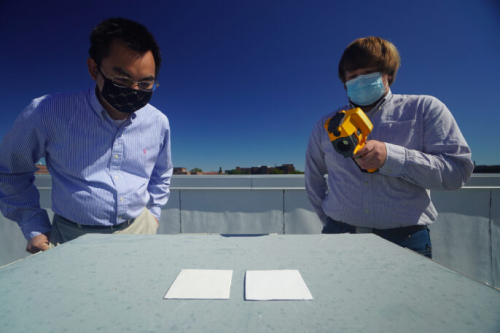In a groundbreaking leap toward sustainable cooling technology, scientists have developed the world’s whitest paint, capable of reflecting up to 98% of sunlight and cooling surfaces by nearly 4.5°C (8°F) below the surrounding temperature — all without using a single watt of electricity.
The innovation comes from a research team at Purdue University, led by Professor Xiulin Ruan, who set out to create a paint that could significantly reduce the need for air conditioning in buildings and vehicles. Their discovery has already earned global attention for its potential to revolutionize energy efficiency and combat climate change.
Unlike traditional white paints, which typically reflect only 80–90% of sunlight and still absorb heat, this ultra-white coating uses a high concentration of barium sulfate particles — the same compound found in photographic paper and cosmetics. These particles are carefully engineered in varying sizes to scatter sunlight more effectively, reflecting ultraviolet, visible, and infrared rays back into space.
“Our paint doesn’t just reflect heat — it radiates it away from the surface,” Professor Ruan explained. “That’s why it can keep things cooler than the surrounding air, even under direct sunlight.”
Tests have shown that surfaces coated with this paint can stay up to 4.5°C cooler than ambient temperatures during the day and reduce indoor temperatures at night, offering an eco-friendly alternative to air conditioning systems that rely on electricity and refrigerants.
Researchers believe that if the paint were applied to rooftops, buildings, and vehicles worldwide, it could drastically cut energy consumption, reduce carbon emissions, and mitigate urban heat island effects — a major environmental challenge in large cities.
The innovation also holds promise for space applications, as the cooling mechanism could help regulate the temperature of spacecraft or satellites exposed to extreme solar radiation.
“We didn’t set out to make the world’s whitest paint — we wanted to solve the problem of global warming,” Ruan added. “But it turns out that doing one helps achieve the other.”
The Purdue team has already filed patents and is collaborating with industry partners to bring the paint to commercial markets in the near future.
If adopted globally, this humble can of paint could become one of the simplest yet most powerful tools in the fight against climate change.







